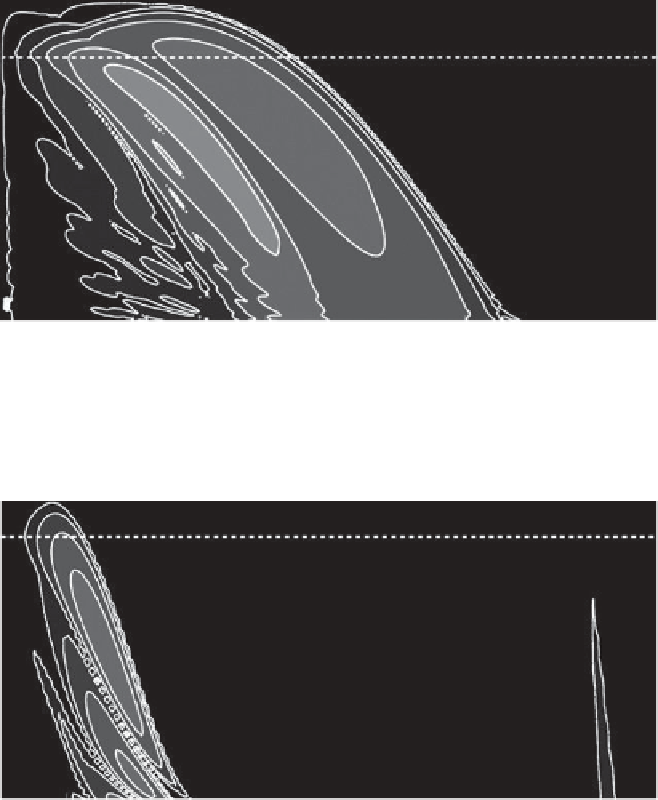Geoscience Reference
In-Depth Information
(a)
2
1
0
-1
-2
-3
-4
-5
0
0.5
1
1.5
2
2.5
3
3.5
4
4.5
5
kR
d
(b)
2
1
0
-1
-2
-3
-4
-5
0
1
2
3
4
5
6
7
8
9
10
kR
d
Figure 6.17.
Growth rate of the most unstable modes as a function of the topography parameter To for (a) Ro = 0.02 and
(b) Ro = 0.2 with
δ
H
=0.1
isopycnal and shelf slopes in the opposite directions and
are typical of buoyant coastal currents.
In order to study the influence of the topography on the
stability of the current and to vary the parameter To with-
out changing other parameters, we will define the aspect
ratio between the two layers as
δH
=
H
1
(r
1
)/H
2
(r
1
+
L)
and keep it constant while varying the topography height.
The novelty of the configuration with nontrivial topog-
raphy is that the latter allows for specific topographic
waves, in addition to frontal, Kelvin, Rossby, and Poincaré
waves discussed above. These waves may resonate with
other types of waves and thus lead to new instabilities.
On the other hand, topography changes the propagation
speed of these waves and may thus “detune” the reso-
nances, leading to stabilization of the flow. We observe
both effects, depending on To.
Figure 6.17 shows the growth rates of the most unsta-
ble modes as a function of To and nondimensional wave
number for the set of parameters used in the disper-
sion diagrams of Figures 6.10a, 6.10b, and 6.12c. In all
cases there is a strong stabilization of the flow for a pos-
itive To, with growth rates vanishing for To close to 1

















































































